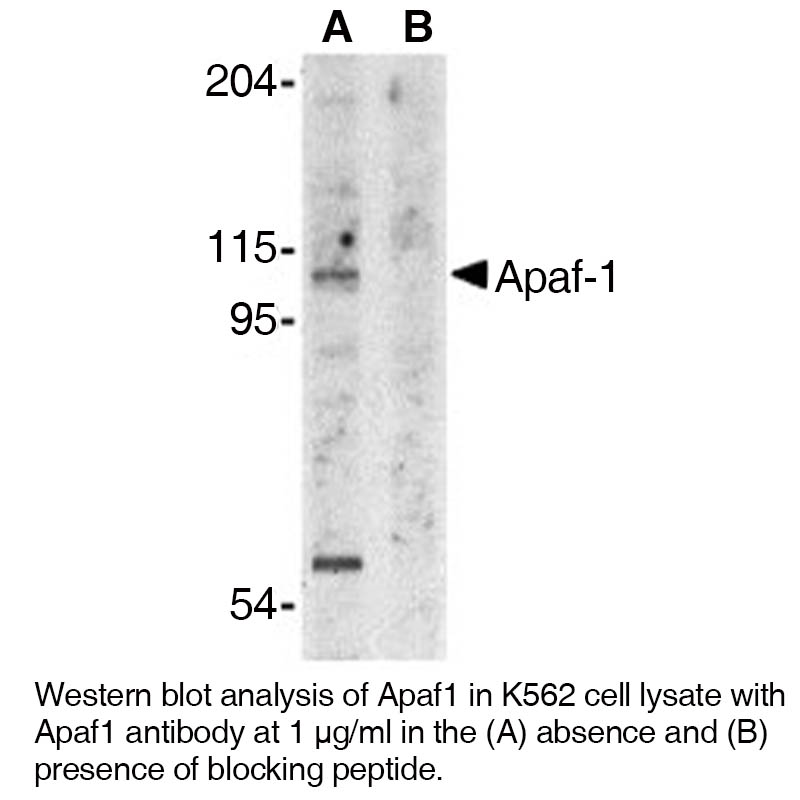Anti-Human Apoptosis Protease Activating Factor-1 (NT) (Apaf-1)
| Code | Size | Price |
|---|
| LEI-A157-20ug | 20 ug | £221.00 |
Quantity:
| LEI-A157-0.1mg | 0.1 mg | £574.00 |
Quantity:
Prices exclude any Taxes / VAT
Overview
Host Type: Rabbit
Antibody Clonality: Polyclonal
Regulatory Status: RUO
Target Species: Human
Application: Western Blot (WB)
Shipping:
Ambient
Storage:
This polyclonal antibody is stable for at least one week when stored at 2-8°C. For long term storage aliquot in working volumes without diluting and store at -20°C in a manual defrost freezer. Avoid Repeated Freeze Thaw Cycles.
Images
Further Information
Concentration:
0.5 mg/ml
Conjugate/Tag/Label:
Purified No Carrier Protein
Format:
This polyclonal antibody is formulated in phosphate buffered saline (PBS) pH 7.4 containing 0.02% sodium azide as a preservative.
Formulation:
This polyclonal antibody is formulated in phosphate buffered saline (PBS) pH 7.4 containing 0.02% sodium azide as a preservative.
Immunogen:
PN:A174
Long Description:
Apoptosis is related to many diseases and induced by a family of cell death receptors and their ligands. Cell death signals are transduced by death domain containing adapter molecules and members of the caspase family of proteases. The mammalian homologues of the key cell death gene CED-4 in C. elegans has been identified recently from human and mouse and designated Apaf-1 (for apoptosis protease-activating factor 1).1,2 Apaf-1 binds to cytochrome c (Apaf-2) and caspase-9 (Apaf-3), which leads to caspase-9 activation. Activated caspase-9 in turn cleaves and activates caspase-3 that is one of the key proteases, being responsible for the proteolytic cleavage of many key proteins in apoptosis.3 Apaf-1 can also associate with caspase-4 and caspase-8.4 Apaf-1 is ubiquitously expressed in human tissues.
Target:
Apoptosis Protease Activating Factor-1
References
1. Zou, H. et al. (1997) Cell 90:405-13 2. Cecconi, F. et al. (1998) Cell 94:727-37 3. Li, P. et al. (1997) Cell 91:479-89 4. Hu, Y. et al. (1998) Proc Natl Acad Sci USA 95:4386-91
Related Products
| Product Name | Product Code | Supplier |
|---|



